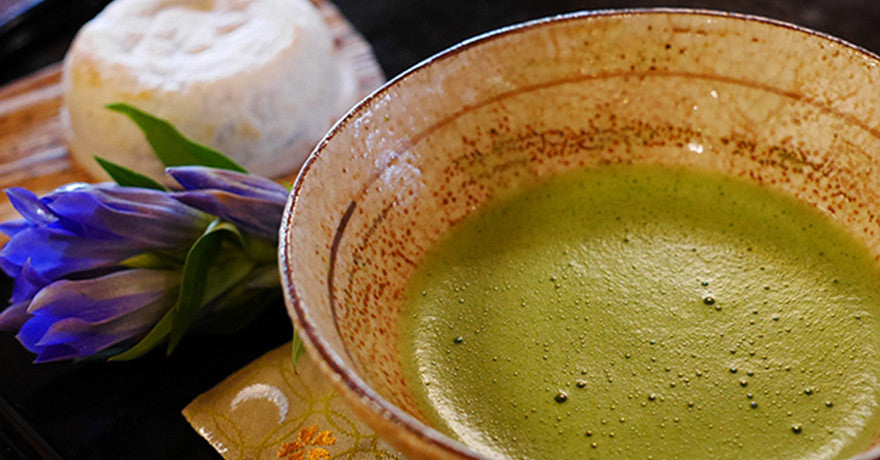Your Cart is Empty
FREE SHIPPING ON ALL ORDERS OVER $60 WITH CODE - FREESHIP

Before I go into its specific uses for depression and other ailments, I want to go into some important background information and give you a brief but informative history of Matcha Tea.
Matcha green tea can be dated back to the 10th century, in the Tang Dynasty, China. In these early years, tea leaves were steamed and made into bricks; either for sale or storage. However, the modern methods of matcha production are far much different from this ancient method. The health benefits and increased uses of Matcha tea at this time were still relatively unknown, as compared to what people know today.
During the Song Dynasty, between the 10th and 13th century, matcha drinkers produced tea from steam dried leaves. Just as in modern preparation, the tea powder was whipped in a bowl containing hot water.
The Zen Buddhists were the first people to prepare and consume powdered tea in several rituals. At the end of the 12th century, they introduced these rituals to the Japanese. It is, however, interesting that powdered tea is not popular in China (where it originated) nowadays. Matcha tea was considered an important drink in Japan and became increasingly popular between the 14th to 16th centuries. Even today, it's primarily grown in Japan, in Nishio and Kyoto Prefecture.
We would not be wrong saying that if Matcha Green Tea had not been received so well in Japan back then, chances are that we would not see Matcha in our modern world today.
Believe it or not, the use of matcha tea started as part of religious practices. However, with time, its use evolved to a transformative practice, thanks to its aesthetic characteristics of bringing a quiet and sober refinement. Matcha was used in various tea ceremonies, “sabis” and “wabis”, all meant for spiritual awakening, while we embrace and accept our imperfections. At this time, drinking matcha was considered helpful in spiritual enlightenment.
At the end of the 16th century, most Japanese societies had adopted the practice of drinking matcha tea. They based their tea ceremonies on harmony, respect, purity and tranquility. The unique thing is that Japanese still learn more about tea ceremonies through “tea clubs” present in most schools including institutions of higher learning. Students new to the tea clubs learn by observing the practices of advanced students. Some beginner lessons in these tea clubs include opening and closing sliding doors correctly, handling and washing tea equipment, how to enter and leave the tea room and the different methods of preparing matcha green tea. One more thing about these classes – the study is limited to observation and actual practice, note taking is highly prohibited.
Students progress and master a lot more about matcha and tea ceremonies. They are awarded certificates before advancing to higher levels. It is a customary practice that students appreciate their teachers with a gift (which is money in most cases). The cost of lessons and their certificates increases as the learner advances through various levels; with the most advanced ceremonies being more expensive.
Not only does Matcha tea taste amazing, but it's also actually quite healthy! Matcha green tea is quite unique; it's a super food and something that presents an epicurean experience. No other beverage of food can make both claims, not even great wines that are considered among life’s finest pleasures.
Some have said that drinking the highest-quality matcha is like drinking Romanée Conti, and getting at least ten times the health benefits of top super foods at the same time.
Taking matcha green tea is a true epiphany for those who know its worth. It is the greatest gift you can give your body and brain. It results in better concentration and focus, weight loss, strengthens body immunity; not forgetting the kind of calm euphoria feeling with a fresher breath.
Matcha is fully packed with antioxidants, these act as anti-inflammatory agents in your body. The ORAC (oxygen radical absorbance capacity) score of Matcha is at an astounding 1440; this is more than the combination of several superfoods. Matcha green tea contains EGCG (epigallocatechin gallate), which is beneficial in treating prostate, cervical, brain and other cancers. Matcha also increases your energy, aids in digestion, promotes fat burning, eliminates dementia and improves oral hygiene. Matcha has high levels of chlorophyll that help in blood detoxification.

It is hard to imagine that taking a beverage would actually help in meditation. The story of matcha centers around bringing mental calmness such that you stay awake during meditation. During meditation, it helps us become more mindful about the present moment and our experiences. It brings about composure, such that you can always bring yourself back whenever you are thinking excessively about the future or the past for that matter.
The benefits of matcha tea during meditation manifest within a short time; they include;
Drinking a cup of matcha green tea before a yoga or meditation session keeps you at ease without distraction. This is simple - matcha is a real jumpstart to feeling the moment.
A few fun ways to drink and cook with Matcha Green Tea.
So what are you waiting for? Try some delicious matcha tea for yourself, and reap the mental and physical benefits that have been known about for thousands of years!